Tips for a Beautiful Mid-Summer Garden in Zone 5B
Need tips for a beautiful mid-summer garden in Zone 5B? Then you’ll want to read on.
Mid-summer is an exciting time of year for gardeners in Zone 5B. The warm weather and longer days provide the perfect conditions for a thriving garden. Whether you’re a seasoned gardener or a beginner, there are essential tasks to complete during this time to ensure a bountiful harvest.

On my blog Living Large in A Small House, I may sometimes use affiliate links, which means a small commission is earned if you purchase via the link. The price will be the same whether you use the affiliate link or go directly to the vendor’s website using a non-affiliate link. You can find my full Disclosure Policy HERE
Understanding Zone 5B is crucial for a successful garden. This zone has a shorter growing season, with an average frost date of October 1st. It’s essential to choose plants that can withstand colder temperatures and shorter growing seasons. Additionally, choosing the right plants for your garden is crucial. Some plants thrive in the summer heat, while others prefer cooler temperatures.
Dealing with deer, pests, and diseases can be a challenge for any gardener. However, there are ways to prevent and manage these issues. Regular maintenance is key to a healthy garden. Deadheading, pruning, and watering are essential tasks to keep your garden flourishing. With proper care, you’ll be able to harvest and enjoy the fruits of your labor.

Key Takeaways
- Understanding your zone and choosing the right plants is crucial for a successful mid-summer garden in Zone 5B. (Northern Illinois for me)
- Regular maintenance is essential for a healthy garden and to prevent issues with pests and disease.
- With proper care, you’ll be able to harvest and enjoy your garden’s bounty.
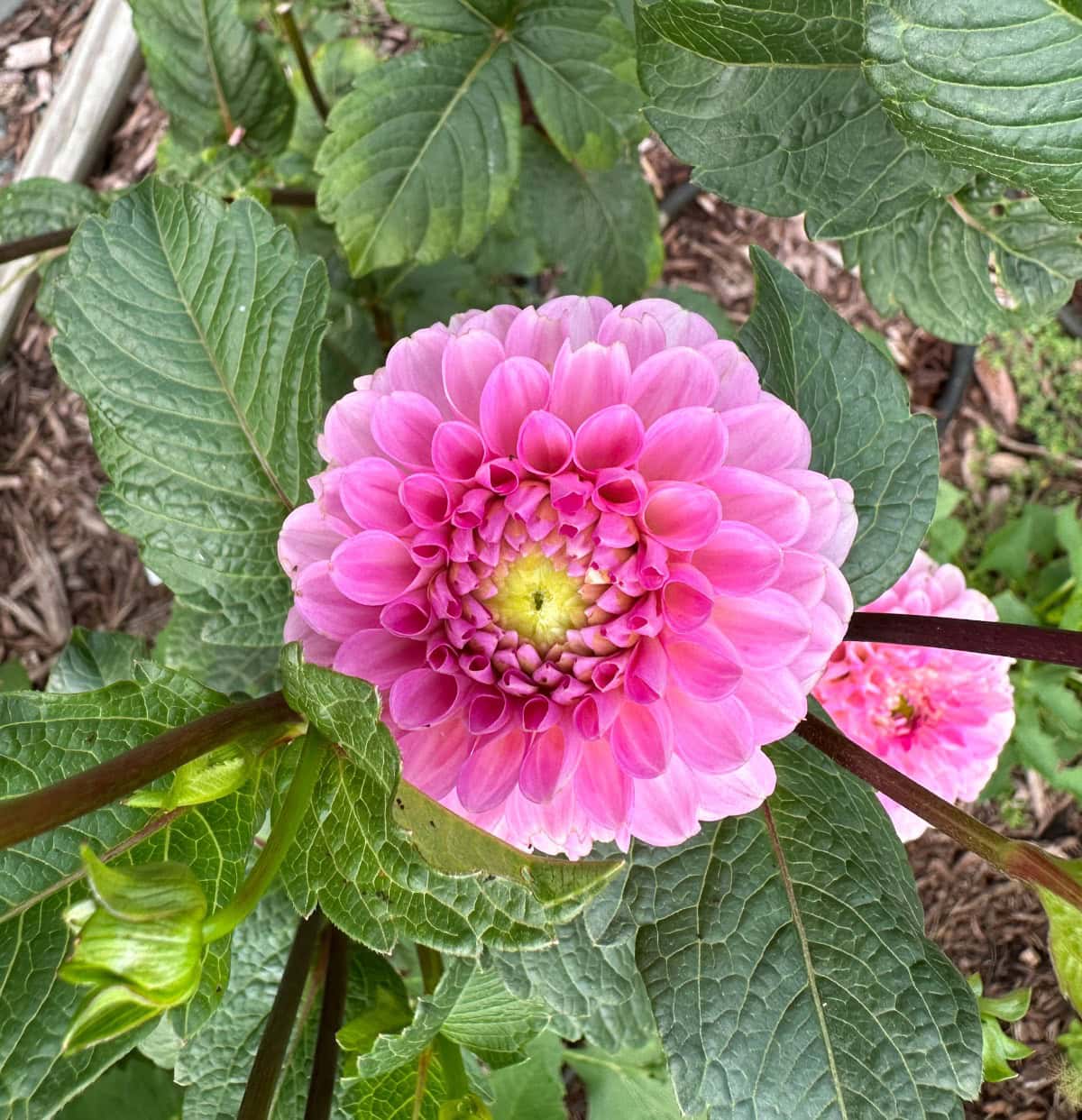
Understanding Zone 5B
If you live in USDA Zone 5B, you’re in an area with a cold and harsh winter climate. The average minimum temperature ranges from -15°F to -10°F (-26°C to -23°C) and the growing season is typically from mid-May to mid-September.
When planning your mid-summer garden in Zone 5B, it’s important to choose the best plants that can handle the cold winters and the hot summers. Some perennial plants that are well-suited for this zone include:
- Coneflowers
- Daylilies
- Hostas
- Bee Balm
- Black-eyed Susans
- Hydrangeas
- Sedum
- Shasta Daisies
It’s also important to consider the soil conditions in your area. Zone 5B has a mix of soil types, including clay, loam, and sand. If you’re not sure what type of soil you have, you can get it tested at your local garden center or through a soil testing service.

In addition to choosing plants that are well-suited for your zone, it’s important to provide them with the right care. This includes proper watering, fertilization, and pruning. During the hot summer months, it’s important to water your plants regularly to prevent them from drying out. Adding a layer of mulch around your plants can also help retain moisture in the soil.
By understanding your zone and choosing the right plants, you can create a beautiful and thriving mid-summer garden in Zone 5B.
No matter where you live you can consult the U.S. Department of Agriculture for your plant hardiness zones. Understanding your zone is important because it helps you choose plants that will thrive in your environment.

Essential Mid-Summer Garden Tasks
Watering
Keeping your garden hydrated is crucial during mid-summer, especially in Zone 5B where the temperatures can soar. Water your garden deeply and thoroughly at least once a week. Keep an eye on your soil moisture as you may need more frequent watering if the weather is particularly hot and dry. It’s best to water your garden early in the morning or late in the evening to minimize water evaporation in the heat of summer. Consider using a soaker hose or drip irrigation system to ensure water is delivered directly to the roots of your plants.
Weeding
Weeds can quickly take over your garden bed during mid-summer, so it’s essential to stay on top of them. Pull weeds by hand or use a hoe to remove them from the soil. Be sure to remove the entire root system to prevent the weeds from growing back. Consider using a layer of mulch around your plants to help suppress weed growth.
Fertilizing
Fertilizing your garden during mid-summer can help keep your plants healthy and thriving. Use a balanced fertilizer with equal amounts of nitrogen, phosphorus, and potassium. Apply the fertilizer according to the manufacturer’s instructions, and be sure to water your plants thoroughly after fertilizing.
By following these essential mid-summer garden tasks, you can help ensure your garden stays healthy and vibrant throughout the season. Remember to stay on top of watering, weeding, and fertilizing to keep your plants happy and thriving.

Choosing the Right Plants for Zone 5B
For vegetable gardeners, when it comes to creating a mid-summer garden in Zone 5B, choosing the right plants is essential. You want to ensure that your garden thrives in the warm summer months, and the best way to do that is by selecting plants that are well-suited for your climate.
Vegetables
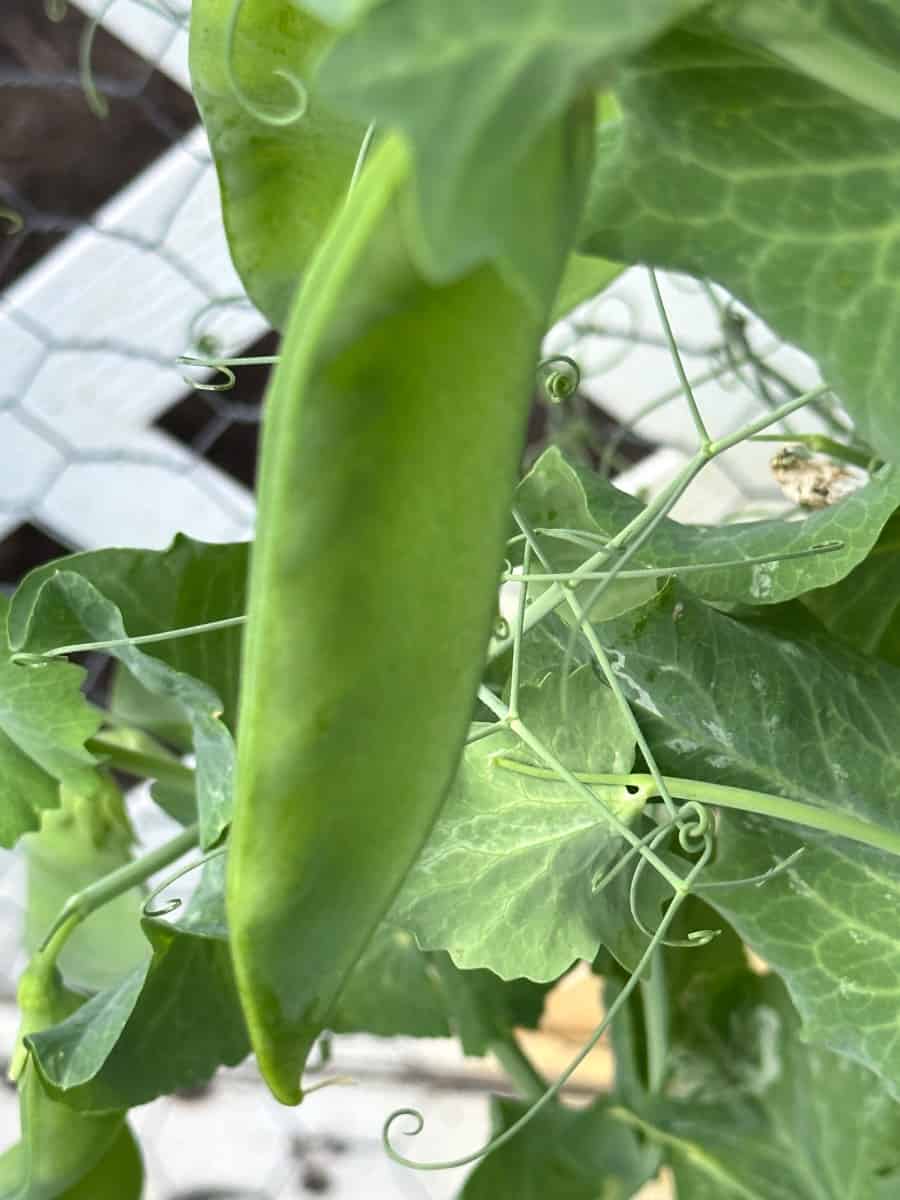
When it comes to vegetables, there are plenty of warm-season crops that grow well in Zone 5B. Some of the most popular choices include:
- Tomatoes
- Cucumbers
- Beans (Pole, Bush, Green, and Shap)
- Carrots
- Peppers
- Squash, Zucchini
- Snow Peas
- Beets
- Cabbage
Make sure to choose varieties appropriate for your growing season that can handle the hot weather of mid-summer. Be sure to plant your vegetables in a spot that receives plenty of sunlight and is well-drained. Some of these plants are already giving me produce. The bulk of it will be ready in early August.
Some of the early spring cool weather plants are ready for harvest.
- Leafy Greens; including leaf lettuce, spinach, swiss chard
- Root Vegetables: beets and radishes
- Herbs

Flowers
Flowers are a great way to add color and beauty to your mid-summer garden. Some of the best annual flowers for Zone 5B include:

- Inpatient
- Marigolds
- Petunias
- Strawflowers
- Sweet Pea
- Zinnias
- Snapdragons
- Dahlias
- Celosia
- Cleome
Using annuals is an amazing way to fill in bare spots in your perennial beds, and fill pots and window boxes. They can add color to any area of your yard that lasts all season long.
When choosing flowers, consider the amount of sunlight and water they require, as well as their growing habits.
Herbs
Herbs are a great addition to any mid-summer garden, as they are not only beautiful but also useful in the kitchen. Some of the best herbs for Zone 5B include:
- Basil
- Thyme
- Rosemary
- Chives
- Oregano
- Sage
- Dill
- Parsley
When planting herbs, be sure to choose a spot that receives plenty of sunlight and has well-drained soil. Many herbs, like basil, prefer rich, moist soil, so be sure to amend your soil with compost or other organic matter.
In Zone 5b mint can become invasive so I plant it in a pot. Chives, Oregano, and Sage are perennial and come back every year.
Succession Planting
Now is the best time to plant my second crop. I sow seeds for cool-weather plants like lettuce, kale, and radishes for a fall crop. I will have a fall harvest before the first frost.
I’m also taking advantage of this warm weather to sow some perennial seeds in my greenhouse. It’s the perfect time to get quick germination and get them in the ground so they can root well before the first frost dates.
By choosing the right plants for your mid-summer garden in Zone 5B, you can ensure that your garden thrives and provides you with plenty of beauty and bounty throughout the season.
Dealing with Deer, Pests & Disease

Dealing with Deer
Deers are notorious for eating buds, leaves, and flowers in your garden. My gardens have taken a beating some years.
My new system of Invisible Fence, Deer Out, and Plantskyy are spray deterrents that I alternate each week.
I’ve added shaved Irish Spring Soap and my Scarecrow (a motion-activated sprinkler). But the winner has been cheap pinwheels that I move around the yard.
You can read more about keeping deer out of your gardens HERE.

Common Pests
Pests such as aphids, spider mites, and whiteflies can damage your plants. To prevent them, you can use insecticidal soap or neem oil. You can also attract or add beneficial insects such as ladybugs, lacewings, and praying mantises to your garden. These insects will eat the pests and keep them under control.
Disease Prevention
Diseases can spread quickly in your garden and damage your plants. To prevent this, you should keep your garden clean and debris-free. You should also avoid overwatering your plants and make sure they have proper drainage. If you notice any signs of disease, such as yellow leaves or black spots, remove the affected plants immediately to prevent the disease from spreading. Drip irrigation is also a great way to keep disease at bay.
In conclusion, dealing with deer, pests, and disease can be a challenge, but with the right tools and techniques, you can keep your garden healthy and thriving. Remember to use repellents, attract beneficial insects, and keep your garden clean to prevent disease.
Maintenance Tips for a Healthy Garden
Keeping your garden healthy and thriving throughout the mid-summer season requires proper maintenance. Here are some tips to help you maintain a healthy garden in Zone 5B.
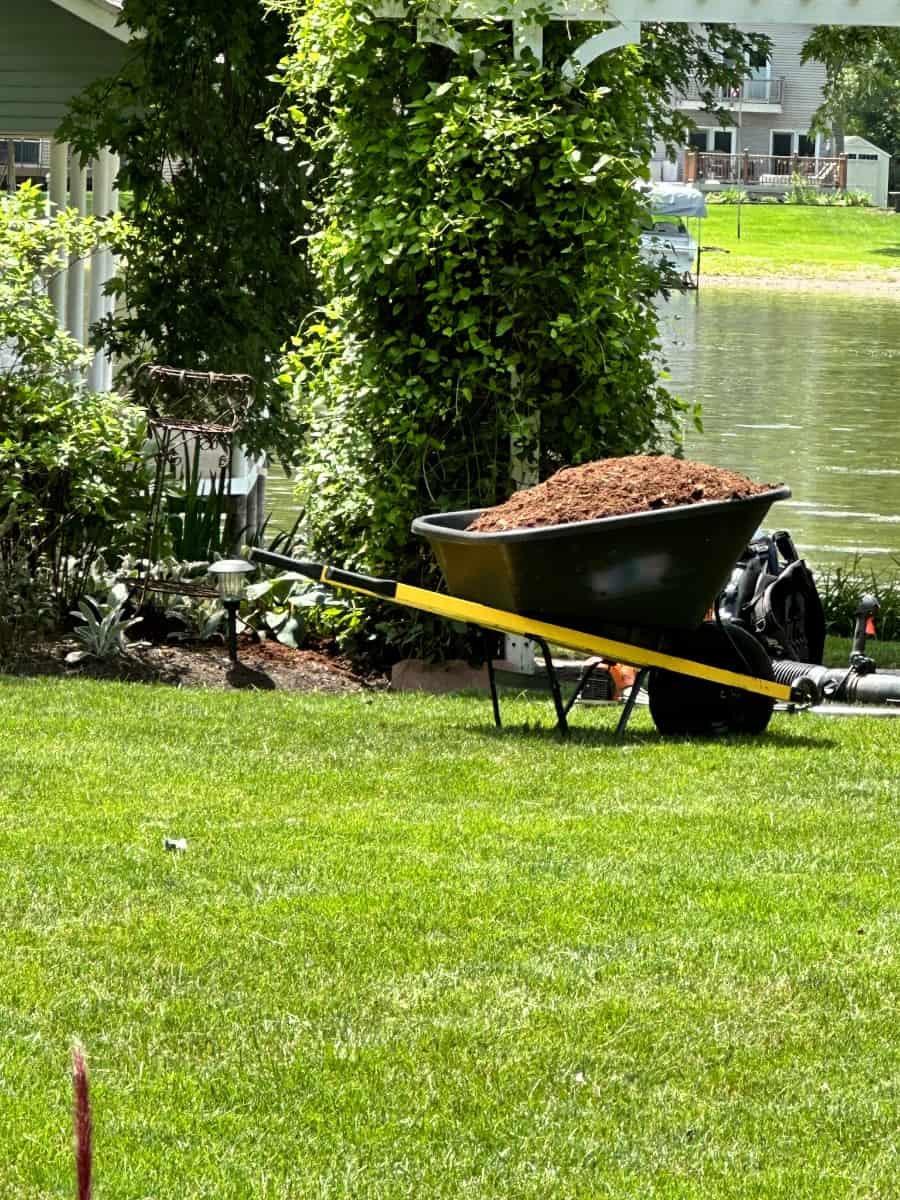
Mulching
Mulching is a crucial step in maintaining a healthy garden. It helps retain moisture, suppress weeds, and regulate soil temperature. To mulch your garden, follow these steps:
- Remove any weeds or debris from the soil surface.
- Apply a layer of organic mulch, such as shredded leaves or bark.
- Spread the mulch evenly around the plants, leaving a gap around the stem to prevent rot.
- Water the mulch thoroughly to help it settle.
If you read my post about bag vs. bulk mulch you’ll be happy to know that we chose bulk and we had them put it down for us. A crew was able to do it in 6 hours. It would have taken us many nights and weekends if we did it ourselves.
Pruning
Pruning is another essential maintenance task that helps keep your garden healthy. It promotes healthy growth, removes diseased or damaged branches, and improves the appearance of your plants. Here are some tips for pruning your garden:
- Use sharp, clean tools to prevent damage to the plant.
- Remove any dead or diseased branches first.
- Cut back any overgrown branches to promote healthy growth.
- Shape the plant to your desired form, but avoid cutting back more than a third of the plant at one time.
By following these maintenance tips, you can ensure your mid-summer garden in Zone 5B stays healthy and beautiful.
Harvesting and Enjoying Your Garden
Harvesting Tips
When it comes to harvesting your Mid-Summer Garden, timing is key. You want to pick your fruits and vegetables at the peak of their ripeness for the best flavor and texture. Here are some tips for harvesting your garden:
- Pick your fruits and vegetables early in the morning when they are still cool and crisp.
- Use sharp scissors or pruning shears to avoid damaging the plant.
- Harvesting your crops regularly is the best way to encourage more growth.
- Don’t wait too long to harvest, as some fruits and vegetables will become overripe and lose their flavor.
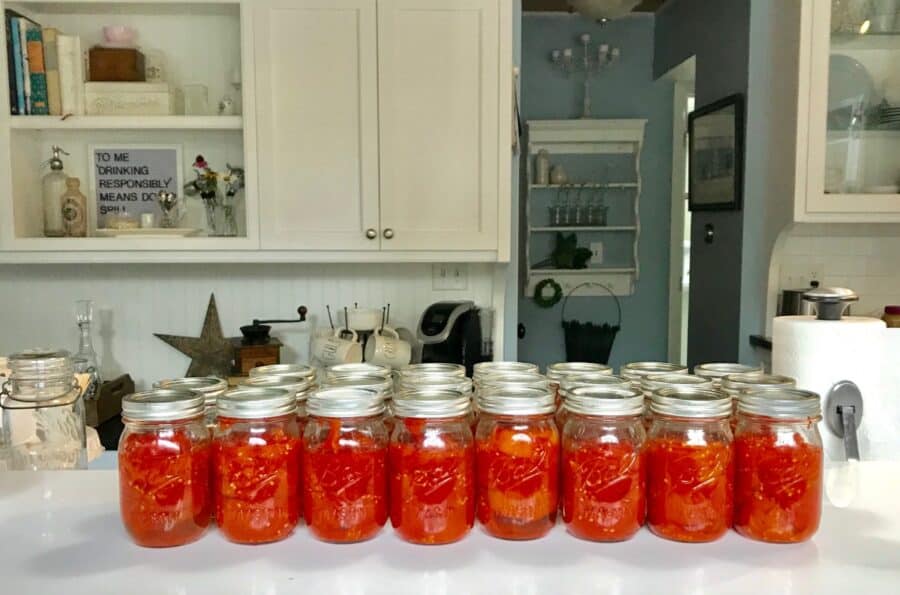
Preserving Your Harvest
If you have an abundance of produce in your Mid-Summer Garden, you may want to consider preserving some of it for later. Here are some methods for preserving your harvest:
- Canning: This involves cooking your fruits or vegetables and sealing them in jars for long-term storage.
- Freezing: Many fruits and vegetables can be frozen to preserve their freshness.
- Drying: Some fruits and vegetables can be dried in a dehydrator or in the sun for a longer shelf life.
- Pickling: This involves soaking your fruits or vegetables in a vinegar solution to preserve them.
Conclusion

No matter how you choose to enjoy your Mid-Summer Garden, make sure to savor the flavors and colors of your hard work. Whether you’re cooking up a fresh vegetable stir-fry or enjoying a juicy peach, your garden is sure to provide you with delicious and nutritious options all season long.
Peace and Love,


Meet Me
My name is Lynn. I live in the suburbs of Chicago in a 1,300 sq. ft. home with my Handy husband, Keith.
I’m an open book about my life on my blog. You can find out more about me by visiting my About page.

Thanks for Following Along
If you enjoyed this post I hope you sign up to be a friend of Living Large in A Small House! Then you won’t miss any of the inspiration that is shared with you each week! You can also follow me on Instagram, Facebook, and YouTube. I share even more inspiration on Pinterest! You can listen to me chat on my Podcast.




living large podcast
You are going to enjoy my chat today with Chelsea from Generation Bakes. She’s a young mom who has reinvented herself and started a small business that includes baking incredible celebration cakes.
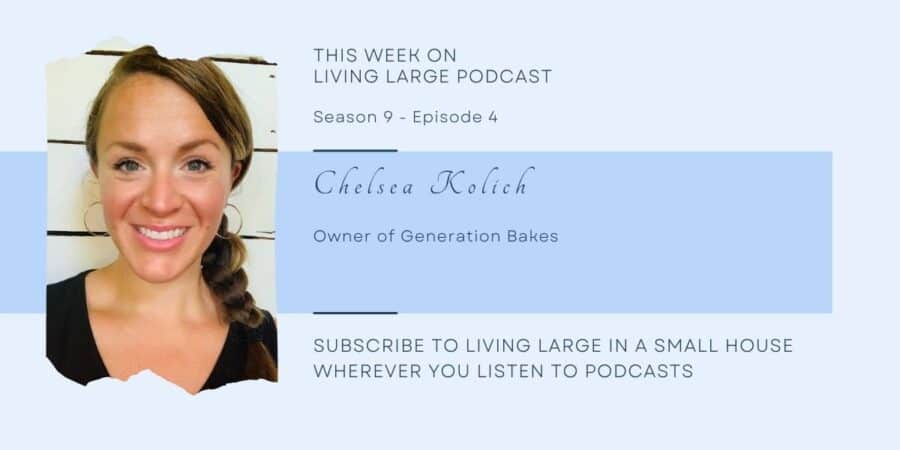

Featured



















